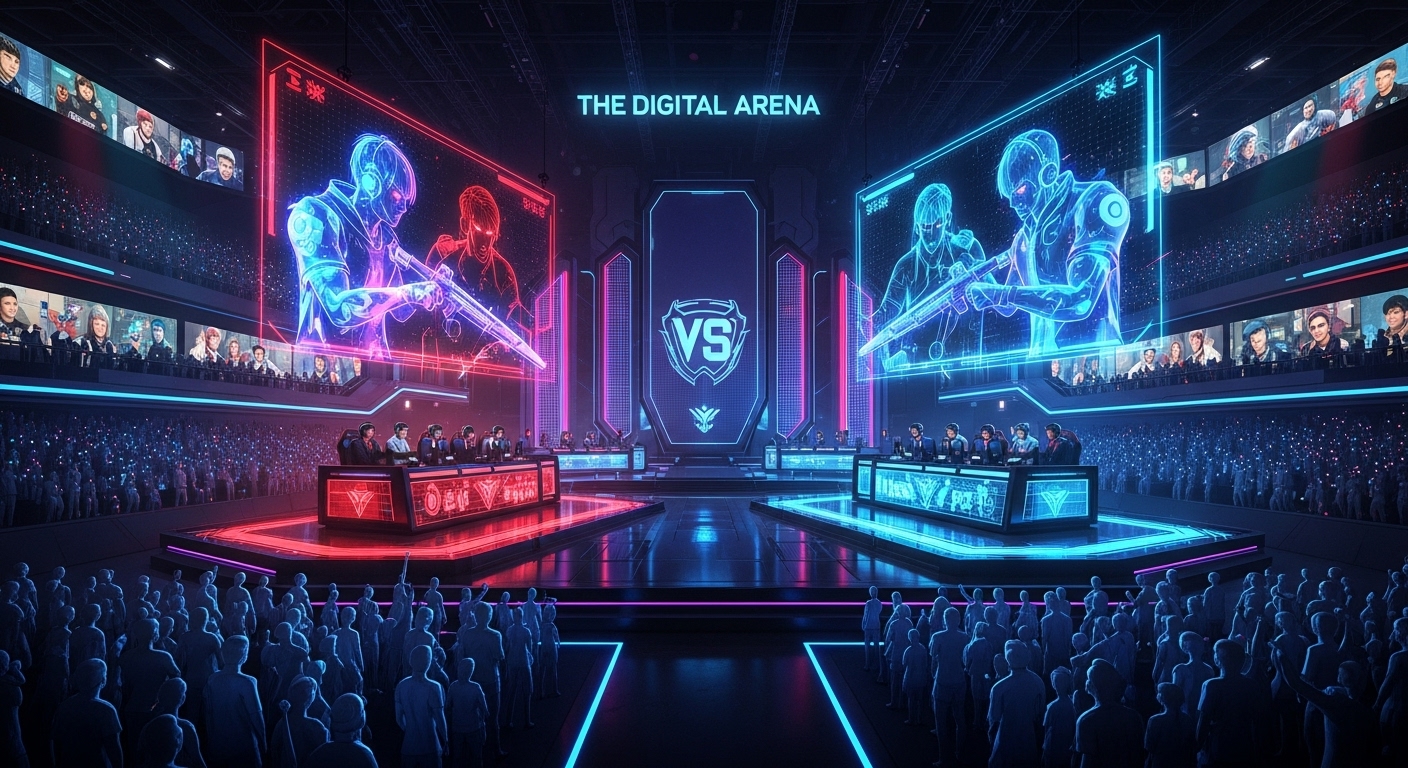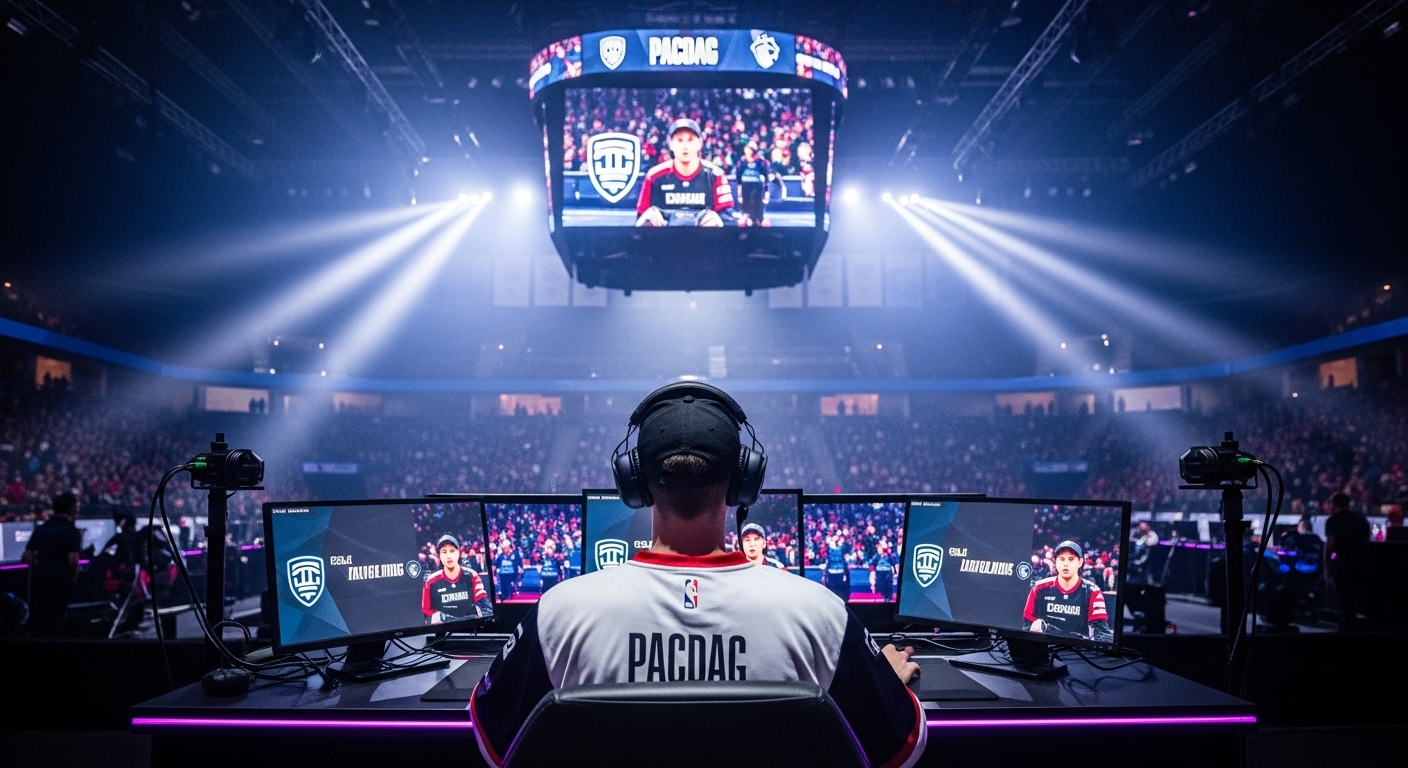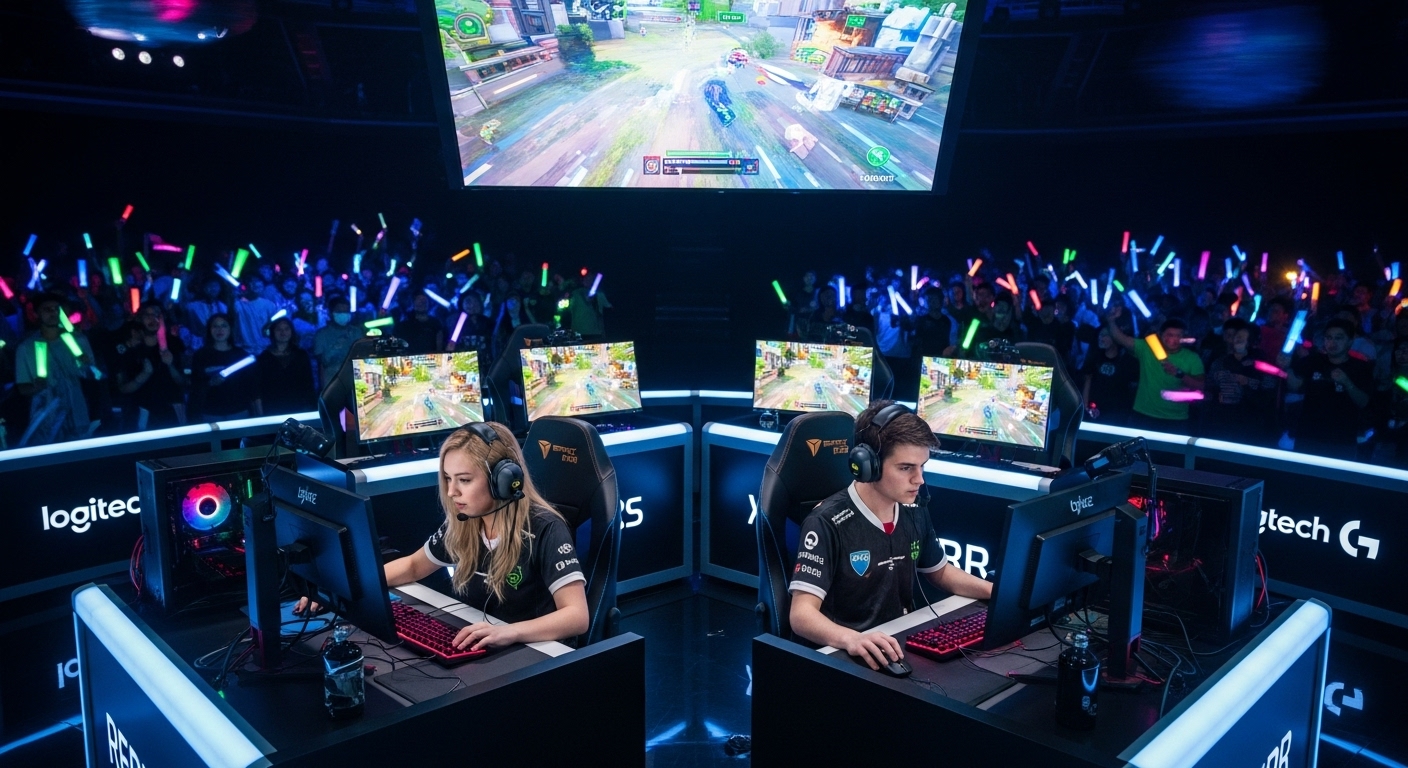Introduction
What once began as a pastime for passionate gamers has evolved into one of the most dynamic and rapidly growing industries in the world — Esports. Over the last two decades, competitive gaming has transformed from small, local tournaments in community halls to packed stadiums filled with thousands of fans and millions more watching online. Esports has become a global entertainment force, blending competition, technology, and community in ways traditional sports could have never predicted.
This blog explores how Esports came to be, why it’s grown so quickly, and what the future holds for this ever-changing digital battlefield.
The Early Days of Competitive Gaming
Before the word “Esports” even existed, there were gamers who loved to test their skills against others. The idea of competitive gaming can be traced back to the late 1970s and early 1980s when arcade machines dominated entertainment centers. Players would compete for high scores in games like Space Invaders or Pac-Man, with bragging rights as the only prize.
The first officially recorded video game competition took place in 1972 at Stanford University. Students gathered to compete in Spacewar!, and the winner received a year’s subscription to Rolling Stone magazine. It was a modest beginning but symbolized something powerful — the birth of gaming as a shared, competitive experience.
By the early 1990s, games like Street Fighter II and Doom introduced direct player-versus-player action. LAN parties and early online multiplayer gaming paved the way for organized competitions. With the rise of the internet, players could now face off with opponents from around the world, removing geographical barriers and laying the foundation for global Esports.
The 2000s: The Birth of Modern Esports
The early 2000s marked a turning point for gaming culture. High-speed internet connections, improved graphics, and online platforms made competitive gaming accessible to anyone with a computer or console. This decade saw the birth of iconic Esports titles and the formation of professional organizations that still exist today.
Games like Counter-Strike 1.6, Warcraft III, and StarCraft: Brood War became household names among gamers. South Korea, in particular, emerged as the global hub of Esports, where StarCraft tournaments filled TV airwaves and players achieved celebrity status. The Korean Esports Association (KeSPA) was established in 2000 to regulate and promote the industry — a move that demonstrated how seriously Esports was being taken.
Meanwhile, in the West, organizations like Major League Gaming (MLG) and the Electronic Sports World Cup (ESWC) began hosting structured tournaments with prize pools worth thousands of dollars. For the first time, gamers could consider professional play as a legitimate career.
By the end of the decade, Esports had grown from an underground hobby to an organized, global scene supported by sponsors, media, and a rapidly expanding fanbase.
The Role of Streaming Platforms in Esports Growth
No single factor fueled the explosion of Esports more than the rise of live streaming. Platforms like Twitch, YouTube Gaming, and later Facebook Gaming changed the landscape forever.
Before streaming, Esports events relied on in-person audiences or low-quality online broadcasts. With Twitch’s launch in 2011, anyone could watch live tournaments, professional players, or even casual gamers in real-time, creating a level of accessibility traditional sports couldn’t match.
Streamers also helped humanize Esports players. Fans could interact directly with their favorite pros, watch them practice, and learn their strategies. This created an emotional connection and sense of community that TV could never replicate.
Streaming also made it easier for new games to enter the competitive scene. Titles like Fortnite, Apex Legends, and Valorant quickly gained traction because viewers could instantly see their potential as spectator-friendly Esports experiences.
The Professionalization of Esports
As audiences grew, so did the stakes. The 2010s marked the professionalization of Esports at every level — from team organization and player contracts to sponsorships and event production.
Major companies began investing in Esports teams, leagues, and broadcasting rights. Professional players were now earning salaries, signing brand deals, and training in team houses similar to athletes in traditional sports. Team organizations like Fnatic, Team Liquid, Cloud9, and T1 became powerhouses, each representing different games and regions.
The introduction of major global tournaments solidified Esports as big business. The International, hosted by Valve for Dota 2, offered multi-million-dollar prize pools funded largely by player contributions. Riot Games’ League of Legends World Championship grew to rival traditional sports events in production value and audience size.
With these developments came a new layer of professionalism: analysts, coaches, nutritionists, and psychologists joined teams to optimize performance. The days of “playing games for fun” were replaced with regimented practice schedules, team strategies, and scouting reports.
Cultural Impact and Mainstream Acceptance
For years, Esports faced skepticism from mainstream media and traditional sports fans. Critics questioned whether gaming could truly be considered a “sport.” However, as viewership numbers climbed and sponsorships poured in, perspectives began to change.
Major television networks began broadcasting Esports tournaments, and universities started offering scholarships for Esports athletes. Cities like Los Angeles, Seoul, and Shanghai built Esports arenas to host large-scale competitions. Even the Olympic Committee acknowledged Esports’ potential by exploring ways to integrate it into future events.
Culturally, Esports bridged generations and communities. Younger audiences who grew up playing games felt represented in a new kind of competitive landscape. Meanwhile, brands realized that Esports was a direct line to the digital-native generation — a group notoriously difficult to reach through traditional advertising.
Esports also broke down barriers of geography, language, and background. Players from any part of the world could compete on equal footing, united by skill rather than physical strength or resources. It became a truly global form of entertainment.
The Economics of Esports
The Esports economy operates at the intersection of gaming, media, and technology. Revenue comes from multiple streams — sponsorships, advertising, ticket sales, merchandise, and media rights.
Sponsorship remains the biggest revenue source. Brands ranging from tech giants to energy drink companies have poured millions into Esports, seeking exposure to its young, engaged audience. Advertising on live streams and broadcasts also generates significant income, especially as Esports events attract tens of millions of concurrent viewers.
Franchised leagues such as the Overwatch League and Call of Duty League introduced a model similar to traditional sports, with city-based teams and structured seasons. This model brought financial stability and long-term investment opportunities but also raised challenges related to high entry costs and sustainability.
Despite these hurdles, the Esports industry continues to expand. Market research firms estimate global revenues exceeding a billion dollars annually, with projections pointing to even greater growth as viewership increases.
Iconic Games That Defined Esports
Certain games have played a defining role in shaping the Esports landscape. Each represents a unique genre and community that contributed to the industry’s diversity.
League of Legends
Released in 2009, League of Legends quickly became one of the biggest Esports titles in history. Its developer, Riot Games, built a competitive infrastructure from the start — structured leagues, yearly world championships, and consistent game balance updates kept fans engaged.
Counter-Strike: Global Offensive
Few games have matched the longevity and influence of Counter-Strike. Known for its simple but strategic gameplay, CS:GO has remained a staple of the Esports scene for over two decades. The combination of skill, teamwork, and unpredictability makes it a fan favorite.
Dota 2
Valve’s Dota 2 is known for hosting The International, the richest tournament in Esports history. Its player-funded prize pool often surpasses 30 million dollars, making it a dream for professional players and a spectacle for fans worldwide.
Fortnite
Epic Games’ Fortnite blurred the line between gaming and entertainment. With its blend of competition, creativity, and pop culture, Fortnite introduced a younger generation to Esports and showed how versatile competitive gaming could be.
Valorant
Riot Games’ Valorant merged tactical shooter mechanics with hero-based abilities, creating a fresh take on the genre. Within a few years of release, it had already become one of the top Esports titles, supported by global tournaments and an active fan base.
Esports and Technology: A Symbiotic Relationship
Esports could not exist without technology — and in turn, it has pushed technological innovation forward.
High-performance computers, advanced graphics engines, and stable internet infrastructure have made competitive gaming possible at a professional level. Streaming technology allowed millions to watch matches simultaneously, while VR and AR promise new dimensions for future Esports experiences.
Data analytics has also become a crucial component. Teams analyze performance metrics to improve strategy, track player fatigue, and predict opponents’ moves. Artificial intelligence tools are increasingly used for coaching and game preparation, bringing a scientific edge to digital competition.
Challenges Facing the Esports Industry
Despite its success, Esports faces several challenges as it matures.
Player Burnout: Professional gamers often train for long hours under immense pressure. Without proper balance, mental and physical exhaustion can shorten careers.
Sustainability: While top-tier tournaments thrive, smaller organizations struggle with profitability. Maintaining consistent revenue streams beyond sponsorships remains a major hurdle.
Integrity and Fair Play: Issues like cheating, match-fixing, and performance-enhancing software occasionally tarnish Esports’ reputation. Strict regulations and anti-cheat technologies are essential to maintaining credibility.
Representation and Inclusion: The industry is still working toward greater diversity. Female gamers and players from underrepresented regions often face barriers to entry, both socially and structurally.
Health and Education: As Esports becomes a career path, balancing gaming with education and well-being becomes a societal concern. Schools and parents are learning to navigate this new territory.
The Future of Esports
Looking ahead, Esports shows no signs of slowing down. The next decade is likely to bring even more integration with mainstream media and entertainment.
Virtual reality and augmented reality could redefine how audiences experience matches, offering immersive perspectives from within the game itself. Artificial intelligence will help coaches and teams analyze data faster and more accurately.
Cross-platform play and cloud gaming will continue to expand accessibility, allowing more players worldwide to compete regardless of hardware. Traditional sports organizations, media companies, and even governments are recognizing Esports’ cultural and economic potential.
As 5G and next-generation internet infrastructure spread, latency issues will shrink, making competitive gaming more seamless and global than ever before.
Esports as a Cultural Movement
Beyond the competition and money, Esports has become a cultural movement. It has shaped fashion, music, and online communities. Major artists perform during gaming events, and collaborations between game publishers and clothing brands are now common.
Esports has also become a storytelling platform. Fans follow players not just for their skills but for their personalities and journeys. Social media allows for direct interaction, creating loyal communities that rival those of any traditional sports team.
The concept of fandom has evolved — it’s no longer confined to watching games; it includes creating memes, producing content, and participating in fan-driven projects. Esports has turned spectators into contributors, blurring the line between creators and audience.
Education and Career Opportunities in Esports
As Esports grows, so do the career paths surrounding it. It’s no longer just about playing the games; there are opportunities in coaching, commentary, event production, marketing, journalism, and analytics.
Many universities now offer degrees in Esports management or gaming technology. Educational institutions are recognizing that Esports teaches valuable skills — teamwork, strategic thinking, leadership, and digital literacy.
For students passionate about gaming, Esports can serve as both an academic and professional gateway, blending creativity with competition in a meaningful way.
Conclusion: The Game Has Just Begun
The story of Esports is one of innovation, passion, and perseverance. In just a few decades, it has gone from being a small community of enthusiasts to a billion-dollar global industry. It has reshaped entertainment, connected cultures, and redefined what competition can look like in the digital age.
Esports is more than just gaming — it’s a symbol of how technology and human creativity can come together to build something extraordinary. It continues to evolve, inspire, and challenge the limits of what we consider sport, art, and community.
The future of Esports isn’t just about who wins the next tournament; it’s about how this digital revolution continues to shape the world we live in.



